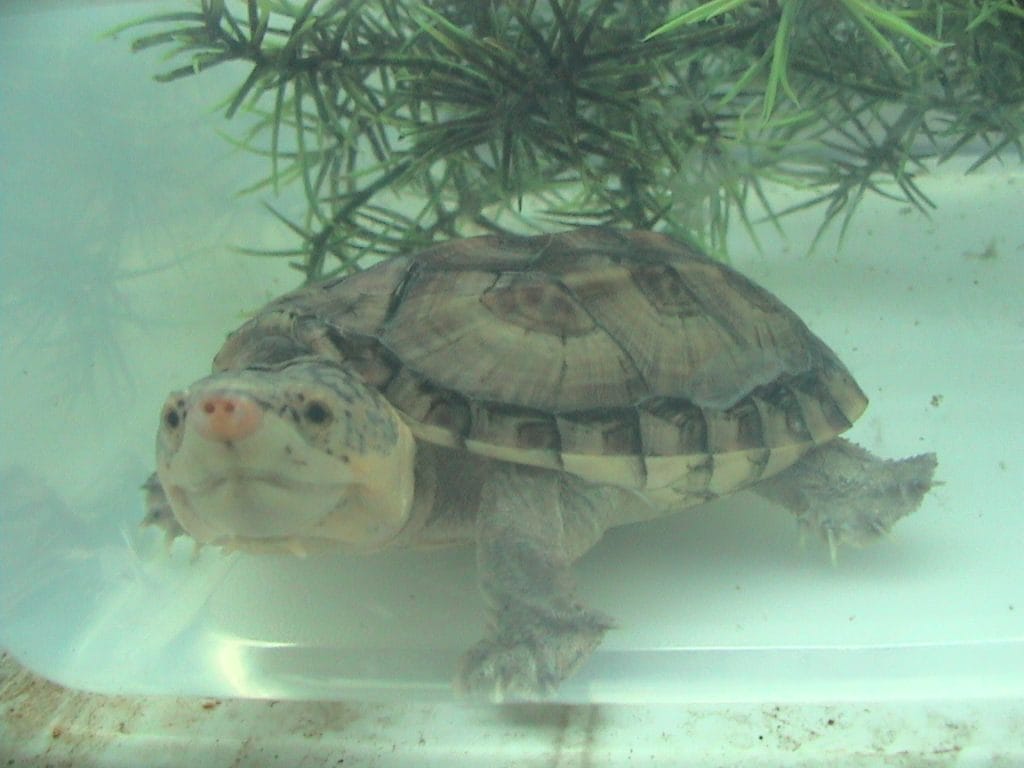Staurotypus salvinii (Giant Musk Turtle)
Home > Turtle Database > Staurotypus salvinii (Giant Musk Turtle)
Staurotypus salvinii, commonly known as the Giant Musk Turtle, is a large, robust freshwater turtle found in Central America. Known for its strong jaws and aggressive nature, this species is a carnivorous predator that thrives in slow-moving water bodies.
Native Turtle Species Map – Find Turtles by Region
Scientific Classification
Kingdom: Animalia
Phylum: Chordata
Class: Reptilia
Order: Testudines
Family: Kinosternidae
Genus: Staurotypus
Species: Staurotypus salvinii
Common Names
Giant Musk Turtle
Salvin’s Mud Turtle
This Hilarious Turtle Book Might Know Your Pet Better Than You Do
Let’s be real—most turtle care guides feel like reading a textbook written by a sleep-deprived zookeeper.
This one’s not that.
Told from the snarky point of view of a grumpy, judgmental turtle, 21 Turtle Truths You’ll Never Read in a Care Guide is packed with sarcasm, sass, and surprisingly useful insights.
And hey—you don’t have to commit to the whole thing just yet.
Grab 2 free truths from the ebook and get a taste of what your turtle really thinks about your setup, your food choices, and that weird plastic palm tree.
It’s funny, it’s honest, and if you’ve ever owned a turtle who glares at you like you’re the problem—you’ll feel seen.
Identification
Description
Staurotypus salvinii has a broad, flattened carapace that is dark brown to black with a rough texture. The plastron is small, leaving much of the turtle’s underside exposed. The head is large, with powerful jaws and a pointed snout. The limbs are sturdy with webbed feet, well-adapted for an aquatic lifestyle.
Sexual Dimorphism
Males are typically smaller than females but have longer, thicker tails. Females have wider, more domed shells and shorter tails.
Check more turtles from the Staurotypus genus
Native Origin and Distribution
Geographical Range
This species is found in Mexico, Guatemala, Belize, and Honduras. It primarily inhabits the Pacific slope of Central America, although populations exist in some parts of the Atlantic drainage.
Preferred Habitat
Giant Musk Turtles prefer slow-moving freshwater habitats, such as rivers, swamps, marshes, and ponds with muddy or sandy bottoms. They are often found in areas with abundant aquatic vegetation.
Behavior
Feeding Habits
These turtles are opportunistic carnivores, feeding on fish, amphibians, aquatic invertebrates, and carrion. Their strong jaws allow them to crush hard-shelled prey like snails and crustaceans.
Predators
Hatchlings and juveniles face predation from fish, birds, and larger turtles. Adults have few natural predators due to their tough shells and aggressive defense tactics.
Reproduction
Breeding Season
Breeding occurs during the wet season, typically from late spring to early summer when water levels rise.
Reproductive Method
Females lay small clutches of elongated eggs in hidden nests near water. The incubation period lasts around 90–120 days, with hatchlings emerging during the warmer months.
Conservation
Extinction Status
Currently classified as Near Threatened on the IUCN Red List.
Threats
Habitat destruction, water pollution, and capture for the pet trade pose significant threats. In some regions, they are hunted for food.
Conservation Measures
Protected areas and conservation programs aim to preserve their habitats. Legal restrictions on trade and hunting have been implemented in some countries.
Economic Importance
Giant Musk Turtles are sometimes kept in captivity by reptile enthusiasts, but their aggressive nature makes them less popular than other species. They also play a role in controlling populations of aquatic prey, contributing to ecosystem balance.
Interesting Facts
- They are one of the largest musk turtles, reaching up to 35 cm (14 inches) in shell length.
- Unlike most turtles, they have a strong bite and can be highly aggressive when threatened.
- Their musk glands release a foul odor when disturbed, which helps deter predators.
- They are capable of staying underwater for extended periods by absorbing oxygen through specialized tissues in their throat and cloaca.
- Despite their size, they are skilled ambush predators, using their camouflage and patience to catch unsuspecting prey.

About Author
Muntaseer Rahman started keeping pet turtles back in 2013. He also owns the largest Turtle & Tortoise Facebook community in Bangladesh. These days he is mostly active on Facebook.













